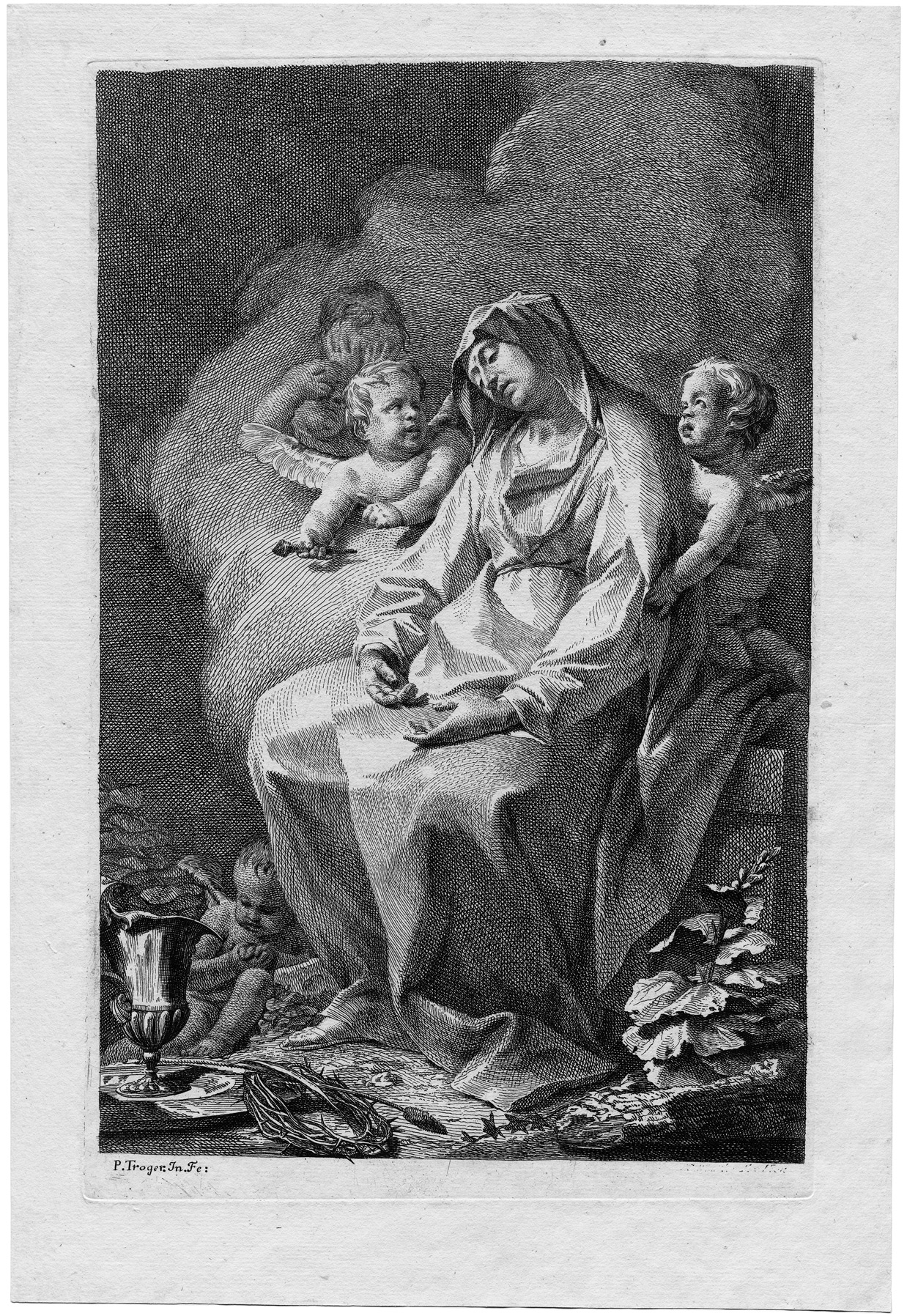Loading the page ...
Paul Troger
(1698 Welsberg – 1762 Vienna)
The Mater Dolorosa Maria, Comforted by Angels. Etching and engraving. 34.5 x 22.2 cm. Nagler 14; Heller- Andresen 4; Aschenbrenner/Schweighofer 291; exhibition catalogue Paul Troger und Brixen: Sonderausstellung zum 300. Geburtstag von Paul Troger, published by L. Andergassen, Brixen, 1998, p. 106, 4.4.
Paul Troger’s printed work is rare and still not comprehensively researched. Nagler describes a total of twenty-three etchings, two of which are considered questionable, and even the monograph by W. Aschenbrenner and G. Schweighofer (Paul Troger, Leben und Werk, Salzburg 1965) did not add anything to the existing oeuvre. Troger’s etchings are distinguished by an individual and technically sophisticated treatment, not the least of their charms being the originality of their iconography.
The present etching reproduces a painting executed by Troger around 1728/30, which is now in St. Peter’s Archabbey in Salzburg. The pose of the sorrowing Mother of God sitting griefstricken on a stone bench reveals deep psychological insight. The posture of her heavy body expresses mental exhaustion and silent suffering. Maria’s eyes are closed and her head is wearily inclined to the side, while her hands rest feebly in her lap. A host of little angels speak words of comfort to the Madonna, while at the foot of the picture one of them looks pensively at the instruments of the Passion. The scene is rendered by means of a varied and concentrated etching technique, which however is less free and painterly than is customary with Troger. The artist has used a close network of lines and cross-hatchings of various degrees of density, light parallel hatchings, small strokes and fine stippling in order to accurately suggest three-dimensionality, texture and a soft chiaroscuro. The bright patches of light provided by the white paper bathes the scene in a luminous, ethereal light. According to Heinz Widauer, however, a certain solidity of treatment and the fact that Troger’s authorship is given in the legend and not by a signature within the image tend to suggest that this is a reproductive print by another artist (“Paul Troger (1698–1762): sein Werk im Spannungsfeld des europäischen Barock”, Barockberichte, 38/39, Salzburg 2005, p. 608).
Regrettably, little is known about Troger’s youth and his life in the years 1716–1724. What is certain is that the artist undertook a study trip to Italy lasting several years, which included stays in Rome, Bologna and Padua. Of fundamental significance for his artistic development was a longish sojourn in Venice, where the artist was definitively influenced by Giovanni Battista Piazzetta, Sebastiano Ricci and above all Giovanni Battista Pittoni. After his return from Italy in the mid-1720s the indefatigable Troger created an oeuvre of considerable dimensions. Together with Daniel Gran and Raphael Donner he ranks among the out-standing representatives of the Austrian Baroque.
A very fine impression, printing with great clarity and contrast, with margins around the platemark. With the artist’s name, and with the address of the publisher Winkler largely deleted. Minor ageing, otherwise in impeccable condition.
Contact us for further information